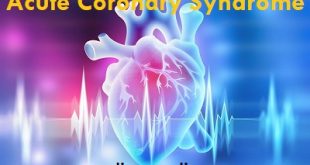Introduction
Ascariasis is a parasitosis of the small intestine caused by one of two worm nematodes (family Ascarididae): Ascaris lumbricoides Linnaeus, 1758, which typically infects humans, and A. suum Goeze, 1782, which is generally found in pigs. The two species are morphologically very similar and both can cause cross infections in each of the hosts.
Morphology of A. lumbricoides eggs
A. lumbricoides is the largest intestinal nematode of man. The female worms are larger than the males and can measure 40 cm in length and 6 mm in diameter. They are white or pink and are tapered at both ends.
A. lumbricoides
Here is the specific classification of Ascaris lumbricoides:
Domain – Eukarya
Phylum – Nematoda
Order – Asaridida
Family – Ascaridoidea
Genus – Ascaris
Species – lumbricoides
Transmission of Ascariasis
- Ascariasis is transmitted by accidental ingestion of ascaris eggs through contaminated food, water or soil. Once the eggs are swallowed, they are passed into the intestine where they hatch into larvae.
- The larvae migrate through the body and into the bloodstream where they can cause severe coughing and wheezing.
- The larvae are eventually swallowed and return to the small intestine where they mature and lay eggs sometimes up to 240,000 per day.
- Ascaris eggs are passed into the feces and incubate in the soil for a minimum of two weeks before the cycle begins again.
History information
The anatomy of A. lumbricoides was first described by Edward Tyson in 1683. However, at that time it was known as Lumbricus teres not A. lumbricoides. It was actually Linnaeus, who renamed Ascaris and gave it its current name. Linnaeus named the roundworm Ascaris lumbricoides because it showed very similar morphology as that of the earthworm, Lumbricus terrestrias.
Then in 1917, Brayton Ransom and Winthrop Foster were able to document the actual life cycle of Ascaris. Afterwards in 1922, Shimesu Koino experimented on himself and his younger brother in order to describe the clinical disease produced by Ascaris. Koino worked with both A. lumbricoides and A. suum.
He swallowed 2000 A. lumbricoides eggs, and he made his younger brother swallow 500 A. suum larvae. Koino became very ill for the experiment but luckily no lasting damage occurred, and his brother did not suffer from as severe a disease.
Specifically, in this daring self-experiment, Koino showed that a pneumonia-like syndrome can develop during early infection with Ascaris. He also discovered that this syndrome was caused by migration of larvae through the lungs to the stomach.
Epidemiology, Prevalence and Incidence
Ascariasis plagues more people in the world than any other parasitic infection. Some estimate that as many as 1-1.5 billion people or approximately 1 out of 4 people are infected with Ascaris. In some tropical areas, 100% of the population have Ascaris.
Ascariasis tends to occur more commonly in places where sanitation is minimal and human feces is used to fertilize crops. As a result, the majority of Ascaris infections are concentrated in the developing world. Approximately, 59 million people are at risk of morbidity or clinical illness from Ascaris.
Children are more likely to be infected and have higher levels of worms. 1.5 million Children with Ascaris infections will suffer from irreversible growth retardation. While death from Ascaris is rare, approximately 10,000 people die from Ascaris each year. Males tend to be more infected then females, due to behavioral habits that make it more likely for them to ingest soil.
Causes of Ascariasis
- You can become infected with ascariasis after accidentally ingesting the eggs of the lumbricoides roundworm.
- The eggs can be found in soil contaminated by human feces or uncooked food contaminated by soil that contains roundworm eggs.
- Children often become infected when they put their hands in their mouths after playing in contaminated soil, according to WHO.
- Ascariasis can also be passed directly from person-to-person.
Risk factors
- Warm tropical or sub-tropical climates
- Rural or overcrowded living areas with poor sanitation
- Lack of modern hygiene and sanitation infrastructure
- Farming practices utilizing improperly treated wastewater or human feces as fertilizer
- Young children ages 3 – 8 years
- Exposure to an environment where dirt might be ingested
Clinical manifestations of Ascariasis
Many people have few or no symptoms. Often the first symptom is live worms being passed in the stool or occasionally from the mouth, anus or nose.
Roundworms in your lungs can cause:
- Coughing or gagging
- Wheezing or shortness of breath
- Aspiration pneumonia, rarely
- Blood in mucous
- Chest discomfort
- Fever
Roundworms in your intestines can cause:
- Nausea
- Vomiting
- Irregular stools or diarrhea
- Intestinal blockage, which causes severe pain and vomiting
- Loss of appetite
- Visible worms in the stool
- Abdominal discomfort or pain
- Weight loss
- Growth impairment in children due to malabsorption
- Malnutrition, anemia and impaired physical growth, particularly in children
Complications associated with Ascariasis
Most cases of Ascariasis are mild and don’t cause major problems. However, heavy infestations can spread to other parts of the body and lead to dangerous complications. They can include:
- Intestinal blockage occurs when a mass of worms blocks your intestines causing severe pain and vomiting. Intestinal blockage is considered a medical emergency and requires treatment right away.
- Duct blockages occur when the worms block the small passageways to your liver or pancreas.
- Infections that lead to loss of appetite and poor absorption of nutrients puts children at risk of not getting enough nutrients, which can affect their growth.
- Children are more likely to have gastrointestinal complications because their small intestines increase their chances of having an intestinal blockage.
Tests and diagnosis
Stool tests
Mature female ascariasis worms in your intestine begin laying eggs. These eggs travel through your digestive system and eventually can be found in your stool.
To diagnose ascariasis, your doctor will examine your stool for the microscopic eggs and larvae. But eggs won’t appear in stool until at least 40 days after you’re infected. And if you’re infected with only male worms, you won’t have eggs.
Blood tests
Your blood can be tested for the presence of an increased number of a certain type of white blood cell, called eosinophils. Ascariasis can elevate your eosinophils, but so can other types of health problems.
Imaging tests
- X-rays. If you’re infested with worms, the mass of worms may be visible in an X-ray of your abdomen. In some cases, a chest X-ray can reveal the larvae in your lungs.
- An ultrasound may show worms in your pancreas or liver. This technology uses sound waves to create images of internal organs.
- CT scans or MRIs. Both types of tests create detailed images of your internal structures, which can help your doctor detect worms that are blocking ducts in your liver or pancreas. CT scans combine X-ray images taken from many angles; MRI uses radio waves and a strong magnetic field.
Treatments and drugs
Typically, only infections that cause symptoms need to be treated. In some cases, ascariasis will resolve on its own.
Medications
Anti-parasite medications are the first line of treatment against ascariasis. The most common are:
- Albendazole (Albenza)
- Ivermectin (Stromectol)
- Mebendazole
These medications, taken for one to three days, kill the adult worms. Side effects include mild abdominal pain or diarrhea.`
Surgery
In cases of heavy infestation, surgery may be necessary to remove worms and repair damage they’ve caused. Intestinal obstruction or perforation, bile duct obstruction, and appendicitis are complications that may require surgery.
Prevention of Ascariasis
The best strategies for preventing ascariasis include
- Washing hands thoroughly with soap and water before handling food
- Washing, peeling, and/or cooking all raw vegetables and fruits before eating, particularly those that have been grown in areas where human feces is used as fertilizer
- Not defecating outdoors
- Effective sewage disposal systems can help prevent this infection from spreading.
- Drinking only bottled water and avoiding raw fruits and vegetables unless you’re able to wash and peel them yourself when you’re in places without modern sanitation.
 Diseases Treatments Dictionary This is complete solution to read all diseases treatments Which covers Prevention, Causes, Symptoms, Medical Terms, Drugs, Prescription, Natural Remedies with cures and Treatments. Most of the common diseases were listed in names, split with categories.
Diseases Treatments Dictionary This is complete solution to read all diseases treatments Which covers Prevention, Causes, Symptoms, Medical Terms, Drugs, Prescription, Natural Remedies with cures and Treatments. Most of the common diseases were listed in names, split with categories.







